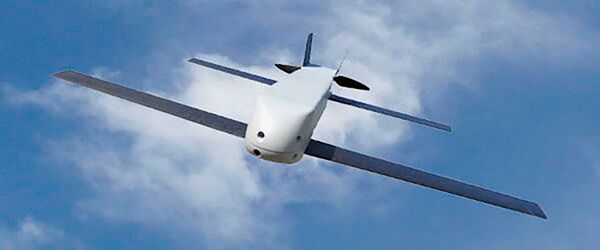
The Switchblade UAV, designed by AeroVironment, is one of the many unmanned systems supplied to Ukraine through the US Department of Defense. (AeroVironment Inc)
Some of the US drones being sent to Ukraine are shaping the US Army's future competitions for unmanned aircraft systems (UASs) and counter-UAS technology, the service's acquisition chief said on 7 August.
The army's newly announced Low Altitude Stalking and Strike Ordnance (LASSO) weapon development programme is meant for developing load-bearing attack munitions for infantry units. Although there will be competition involved, some early increments of the anti-tank munition could be drones already tested in Ukraine, Doug Bush, assistant secretary of the army for Acquisition, Logistics, and Technology, told reporters during a 7 August briefing.
“There is probably some overlap between what we're sending and what we're going to buy ourselves,” he said. The US has sent unmanned systems such as AeroVironment's Switchblade loitering munition, Edge Autonomy's Penguin UAS, and most recently, Flir's nanodrone Black Hornet.
However, Bush noted the army will take advantage of a packed drone industry by potentially having more than one version in order to have more production capacity.
Meanwhile, counter-UAS acquisition is more advanced because this technology has been tested in the Middle East, Bush said. However, it is the low-cost weapons systems that are being supplied to Ukraine that are the most surprising and promising.
He cited the use of large calibre machine guns and night-vision goggles, which are being turned into “something pretty effective when it's cued by a sensor” against drones. Electronic warfare (EW) and “more expensive” systems are still needed to take out threats such as the Iranian drones being supplied to Russia, he said.
Looking to read the full article?
Gain unlimited access to Janes news and more...







